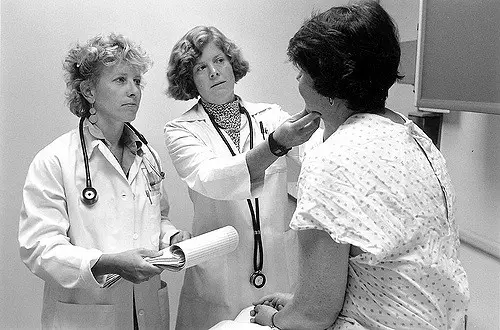In the US, most doctors hold MDs. However, some also hold DO degrees. Although there is a small distinction between a doctor with an “MD” and one with a “DO,” they are essentially the same.
They are both legitimate doctors with the training and credentials to do anything from writing prescriptions and performing surgeries to answering your inquiries about personal hygiene.
Continue reading to discover more about doctors who are DO and MD, as well as their similarities.

What Is a DO?
The initials DO stand for “Doctor of Osteopathic Medicine”. Medical professionals who have completed an osteopathic medical program are awarded a DO.
With a few additional techniques, they practice similar treatment methods to M.D.s. Doctors of Osteopathy frequently emphasize preventative and holistic health.
A person’s mind, body, and emotions are considered when providing therapy under the holistic health approach. They also employ a series of physical adjustments and manipulations to diagnose and treat patients.
Like MDs, DOs can also specialize in different fields of medicine. However, more than half of DOs opt to practice in primary care. The oneness of all body systems is the focus of osteopathic medicine, a method of practising medicine.
What Is an MD?
The letter “MD” stands for “Doctor of Medicine,” which signifies that the doctor graduated from an allopathic medical college.
When identifying patients’ illnesses and providing care, an MD is trained conventionally. In addition, an MD has received training with a concentration on medicine, in which the doctor observes the patient’s symptoms and administers direct care.
MDs can become general practitioners or work as family doctors or physicians. They can also choose to specialize in different fields that necessitate more training, such as:
- Surgery
- Certain organs or body parts
- Psychiatry
- Elderly care medication
- Pediatrics
MD provides care using common medical techniques like x-rays, prescription medications, and surgery. The terms conventional and mainstream medicine are also used to denote allopathic medicine. Science-based, modern medicine is referred to as allopathy.
Similarities
The public may recognize the “MD” after a doctor’s name, but a DO can meet the same prerequisites and be qualified in the same ways as an MD.
The two professions share some general similarities, which are listed below.
Similar Medical Education
Both DO and MD require rigorous application processes to be accepted. Applicants recognize the importance of a strong GPA and a good MCAT score.
MDs and DOs take s
imilar educational paths. Both programs adhere to the same undergraduate curriculum, which includes a bachelor’s degree, pre-med courses, and entrance exams, whereas the medical school curriculum may differ.
Both M.D.s and DOs must complete a four-year undergraduate degree; most students will enroll in pre-medicine classes during this period. After completing their undergraduate studies, students will enroll in either medical school or an osteopathic medical college.
Both Require Clinical Experience
MDs and DOs conform to the same medical standards because both professionals practice medicine after gaining authorization from similar licensing agencies.
Three letters of recommendation from American physicians are needed to apply for residency for prospective DO and MD candidates. Participants have the chance to get these letters while putting their clinical knowledge and abilities to use in clinical settings.
All letters of recommendation are submitted to the electronic residence application system.
Residency Requirements
MDs and DOs need to finish an internship and a residency program after four years of medical school to start working as doctors.
A residency is a period of paid employment when medical students and residents receive hands-on training. In addition, some MDs and DOs pursue fellowships to gain additional knowledge in a particular field.
Despite attending various kinds of schools, MDs and DOs frequently train side by side during residencies and internships.
Based on the medical specialization chosen, residencies can span anywhere from three to six years, regardless of the path a graduate chooses.
Both Treat Patients Holistically
In all 50 states, it is lawful for DOs and M.Ds. to write prescriptions and conduct surgery. Additionally, whether DO or MD, all good doctors practice holistically. You study how to diagnose a patient in medical school. This calls for a thorough physical examination and a comprehensive look at the patient’s circumstances.
Always considering the effects of nutrition and lifestyle is a good doctor. In addition, they will be aware that physical and mental health are both related.
So DO doctors are not the only ones who treat their patients holistically. A doctor’s ability to practice holistically depends more on them than on their educational background.
Comparable Pay
If everything else is equal, the pay for MDs and DOs is similar. Earning potential is much more influenced by the medical specialization you decide to study than your degree.
In general, DOs are more probable than MDs to specialize in primary care. In comparison to less than 30% of MDs, approximately 57% of DOs were working in primary care specialties in 2019, per the American Medical Association (AMA).
Even though having an MD degree is sometimes associated with better pay, this does not mean that MDs are paid more because of their degree. Typically, it’s because people in particular regions know more MDs than others.
If two doctors, an MD and a DO, held the same post and had the same years of experience, their salaries would most likely have been equal.
FAQ
DO vs. MD – Osteopathic vs. Allopathic – What is the Difference??
While MDs use an allopathic medicine method, DOs use an osteopathic approach.
An allopathic strategy emphasizes cutting-edge, evidence-based medicine. The entire body is the focus of osteopathic care.
What Education is Required to Become an Osteopathic Medical Doctor and Earn a DO Degree?
Osteopathic medical students finish four years of medical school and an extra three to nine years of specialty-specific internships and residencies to become practicing DO.
Why choose DO over MD?
You should choose DO over MD if you wish for a more holistic approach to medicine. Since DOs have had more hours of hands-on training, they have a more holistic approach.
What is a DO Vs. MD?
Doctor of Osteopathic Medicine” is what the initials DO stand for. Medical professionals who have completed an osteopathic medical program are awarded a DO.
While “MD” stands for “Doctor of Medicine,” and they signify that the doctor has graduated from an allopathic medical college.
Pros and cons of DO Vs. MD
Some Pros of DO include:
- More emphasis on the musculoskeletal system.
- Easier to go into primary care.
- Students studying to become DOs are also the only ones who receive OMT training, a practical medical method that may be utilized to treat various illnesses.
While some cons are:
- DO students have fewer research opportunities.
- The cost of osteopathic medical schools is typically a little higher.
- Due to the greater number of MD students compared to DO students, there may be more competition.












Leave a Reply